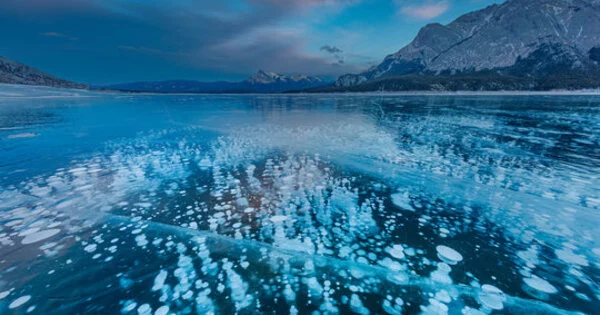Methane, the second most important greenhouse gas after CO2, is emitted in large quantities by lakes and other freshwater systems. Dredging and the use of Phoslock (a phosphate-binding clay particle) have been shown to reduce lake emissions by more than 50%. This is the conclusion of a study published today in Science of the Total Environment by Radboud University researchers.
Methane is primarily produced by natural systems, with freshwater systems accounting for 49 percent of total emissions. Global methane emissions are also increasing as a result of global warming and eutrophication (an excess of nutrients in water). Researchers from Radboud University investigated whether reducing eutrophication could help reduce methane emissions.
Methane is a more potent greenhouse gas than carbon dioxide, with a global warming potential 21 times greater (over a 100-year time horizon) than carbon dioxide. However, because of its shorter atmospheric lifetime (of 12 years), it is estimated that global emissions would only need to be reduced by about 8% from current levels to stabilize methane concentrations. This represents a much lower percentage reduction than is required to stabilize atmospheric concentrations of the other major greenhouse gases, carbon dioxide (CO2) and nitrous oxide (N2O).
These experiments first have to be repeated on a large scale. The preliminary findings are promising, but we need to measure the effect in more locations and over a longer period of time to see if the positive effects persist.
Tom Nijman
Emissions greatly reduced
The study used a system of sixteen testing ponds: some of the ponds were dredged, some were treated with Phoslock, and in the last group, both techniques were used. “Dredging sediment from the ponds’ bottom reduced methane emissions by approximately 52%,” says author and Aquatic Ecologist Tom Nijman. “In the ponds where we used Phoslock, emissions were even reduced by 74%.”
As a result, both methods appear to significantly reduce emissions. Nijman: “Phoslock reduces the amount of phosphate in the water, which reduces the number of floating plants. With Phoslock, invasive plant species such as Azolla (also known as water fern) grow slower, resulting in less methane production in the water. Dredging also allows us to remove organic material from the bottom, such as methane-producing carbon. Our research shows that both methods reduce eutrophication in a lake, lowering emissions.”

Prevention is better than a cure
The researchers believe it is premature to apply this method to as many lakes as possible at this time. Nijman: “These experiments first have to be repeated on a large scale. The preliminary findings are promising, but we need to measure the effect in more locations and over a longer period of time to see if the positive effects persist.”
Wetland methane (CH4) emissions are the most significant natural source of CH4 in the global budget, accounting for roughly one-third of total natural and anthropogenic emissions. CH4 is strongly linked to climate feedbacks as the second most important anthropogenic greenhouse gas in the atmosphere after CO2.
Furthermore, as Nijman demonstrates with a simple calculation, this approach is not appropriate for every situation; it is too expensive for that. “A Phoslock-based approach can easily be six to ten times more expensive than one that focuses on the environment surrounding the lake. This is not always possible in the Netherlands; consider lakes surrounded by trees or agricultural land, with little to no water flowing through them in some cases. In such cases, it may be necessary to use dredging or Phoslock rather than simply overhauling the entire environment. However, in situations where the environment can be altered, the latter is always preferable. Prevention is still preferable to treatment.”





